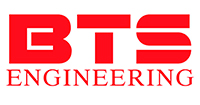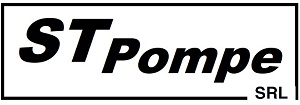March 2021 — Prom-nasos.com.ua
March 31, 2021
ATEX pumps - Alcohol
Pumps for pumping alcohol in the production of alcoholic beverages, pharmaceutical products, tinctures for the release of disinfectants.
The pump features are that it is made in an explosion-proof version of the Ex standard.
The pump can also be installed in rooms where explosion protection is required.
March 13, 2021
Thermal oil pump for bitumen heating station
Long-term storage of the bitumen mass or the need to pour it from the bitumen storage into a tank truck means bringing the mixture into a liquid state, when the bitumen can be easily pumped over with a pump without harming the physicochemical properties of the building material. The most economical and rational way is the use of a heat carrier - thermal oil, capable of receiving and giving off a large amount of thermal energy.
Thermal oil is pumped by a circulation pump at a temperature of 250 C
The thermal oil heated to a high temperature circulates along the entire circuit of the heat exchanger, transferring part of the heat to the bitumen, thereby maintaining its density and viscosity at a certain level, regulated by the standards and regulations for storing bitumen mass.
NKY Hot Oil Pump NDP Gear Pump
The design feature of the pump for thermal oil is the removal of the bearing assembly and the seal in the cooling chamber. Our company offers pumps for thermal oil with subsequent maintenance and supply of spare parts. Mechanical seals and special bearings for the pump shaft.
Our design engineers will help you choose a thermal oil pump for a bitumen heating station.
March 13, 2021
Submersible sewage pump.
Submersible sewage pump.
Pump for a septic tank, cesspool. Pump for sewage stations, for draining wastewater to the central waste system. Pump for sewage treatment plants.
When selecting a pump for wastewater, sewage stations, cesspools, septic tanks, domestic water treatment plants, you need to contact our engineer for the selection of equipment.
Selection of a sewage pump, a pump for a septic tank, a drain pump, a fecal pump. Model and parameters depend on the following factors:
Working hours;
Gear cutting wheels;
Sewage pump with cutting impeller;
Pumping medium;
Installation type;
Pump characteristics, head and volume of liquid that is pumped;
Mains supply voltage;
Protection of the pump network and automation to ensure pump on and off modes.
March 13, 2021
Steam boiler KV-300 living pump - boiler pump
Pump for Viessmann Vitomax 200, Vitoplex 100 steam boiler E1 / 9; E 1.0-0.9; E 1.6-0.9; E-2.5-0.9, Steam boiler
DKVR-2.5; 4, 6.5; 10, 20 boiler DKVR-2.5; 4, 6.5; 10, 20
Feed pump for the steam boiler of the KE-2.5 boiler; 4.0 6.5; 10, 25 pump for steam generator steam boiler RI-5M1P;
centrifugal pump for steam boilers МЗК-7Ач, МЗК-7АЖ-2
Steam boiler KV-300 pump living-boiler pump. Steam boiler D-900, D-721 water supply pump steam boiler D-900,
D-721 pumps for BOILERS ERENSAN, NEOTERM S.R.L., GIBERTI S.R.L.RO IMPIANTI S.R.L. C.M.T. S.R.L.A.T.I. INDUSTRIALE DI
CIRTOLI, ANDREARO IMPIANTI S.R.L. GIBERTI S.R.L. BONO ENERGIA SPA MIMSAN GRUP, SELNIKEL ENERGY, HEAT, AIR TECHNICS,
AZOVOBSCHEMASH, PJSC Brovarskoy PLANT Utility EQUIPMENT, ODO, BURAN-PROGRESS, LLC, VOLCAN-Teploenergo, LLC,
Danik, LLC, pump for boiler KP-300, PTK "Leader -5m", feed pumps for boilers "Monastyrischensky plant
boiler equipment ",
pumps for electric steam generators Solid fuel boiler TITAN - circulation pumps, feed (pumps
pressure increase) for steam boilers Ferroli (Ferroli), boilers Idmar (Idmar), Tesi (Tesi), Titan (Titan), BAHR "UNO
OR pump
Steam boilers DE (E) series - feed pump, feed pump, pressure boost pump,
Pumps for central heating boilers (hard-boiled-liquid and gas fuel) Electric heating boilers.
Electric water heaters. Economizers. Hot water boilers. Deaerator. Condensate tanks Flash. Steam tanks.
Heat exchangers. Expansion tanks with nitrogen cushion. Water tanks with heating element. our company
will offer the most suitable technical solutions based on the latest technologies in the production of steam boilers,
thermal deaerators, economizers and special steam heating systems. Together with these, the company acquired
patents for the manufacture of products for nuclear power plants.
Feed pump (boiler pump, pressure boosting pump) for boilers, for steam generation, for Bosch steam boilers
Universal, Solid fuel steam boilers Energetik (Energetik).
March 13, 2021
Acid pump
How to pump acid in production?
Many technological processes in the food industry, mechanical engineering, pharmacy, chemical and light industries use acids in technological cycles. Dosing, pumping acids, storage, transportation of acids! All these cycles are associated with acid pumping by pumping equipment and acid pump. One example is the supply of acid to the yeast department of a distillery. When from warehouses you have to supply acid to the acid tank in the yeast preparation workshop - yeast wort. Effective for Acids H2SO4 sulfuric acid H2SO3 sulfurous acid HNO3 nitric acid H3PO4 phosphoric acid H2CO3 carbonic acid H2SiO3 silicic acid Other acids Interaction of acids with metals. As we can see from the previous example, for the interaction of acids with a metal, certain conditions must be met (in contrast to the reactions of acids with bases and basic oxides, which almost always take place). First, the metal must be sufficiently active (reactive) with respect to acids. For example, gold, silver, copper, mercury and some other metals with the release of hydrogen do not react with acids. Metals such as sodium, calcium, zinc - on the contrary - react very actively with the release of hydrogen gas and a large amount of heat. acid metal salt HCl + Hg = not formed 2 HCl 2 Na = 2 NaCl + H2¬ H2SO4 + Zn = ZnSO4 + H2¬ Our pumps pump various types of chemically active liquids, cavities, cracks and more
March 13, 2021
Nutrient solutions for hydroponics
Nutrient solutions for hydroponics are prepared by dissolving chemical salts in water that contain nitrogen, phosphorus, potassium, magnesium, calcium, sulfur, manganese, that is, macroelements, as well as boron, copper, zinc and other macroelements necessary for development.
In its composition, the nutrient solution should contain all the elements in ratios that do not exceed their consumption rate by plants. It should be remembered that for the normal development of most plants, the ratio is N = 0.5, P = 1, K = 2, Mg = 0.3. Plants absorb nutrients better from diluted solutions. At a concentration exceeding the optimum rate, plants may die.
The concentration of the nutrient solution may increase due to the fact that plants absorb water faster by the roots than mineral salts dissolved in it. In addition, the water partially evaporates, and this also leads to an increase in the concentration of the nutrient solution. It is especially important to monitor the nutrient solution in summer, when the evaporation of water in the vessels increases. It is necessary that the nutrient solution in the outer vessel is always at the same level, that is, filling it up to half of its volume. When the solution becomes smaller, it is added with water to its original volume: in summer it is usually added after 2-3 days, in winter less often.
The reaction of the solution is of great importance for the normal growth and development of plants. The nutrient solution for plants grown without soil, depending on the crop, should be 5.5-7.0. A shift in the reaction of the solution to the alkaline side (pH above 7) negatively affects the plants; in such a solution, the salts of iron, magnesium, calcium, phosphorus and manganese are converted into insoluble compounds that plants cannot assimilate. Sometimes changes in the composition and concentration of the solution are insignificant, but, nevertheless, they can adversely affect the development of plants. In this regard, it is necessary to periodically determine the acidity of the solution. The prepared solution can be stored in a sealed container for 2-3 months.
Pneumatic diaphragm pumps for evacuating electrolyte from accumulators and feeding into a Eurocube-diaphragm pneumatic pump and peristaltic.
Both types of pumps are self-priming, not afraid of dry running, made of acid-resistant materials, can pump liquids with solid inclusions, do not have mechanical seals, i.e. they can be called hermetic, which is important when pumping aggressive liquids such as acid solutions. A distinctive feature of these types of pumps is the pulsating flow at the outlet, but when a pulsation damper is installed on the pressure pipeline, pulsations are significantly reduced.
It is important to understand that to use a diaphragm pneumatic pump, you need compressed air in sufficient quantity, with a pressure of at least 2 bar. The maximum air pressure for the pneumatic diaphragm pump is 7 bar. In addition, pneumatic diaphragm pumps can be considered mobile, because they have low weight and dimensions.
7 posts





























































































































